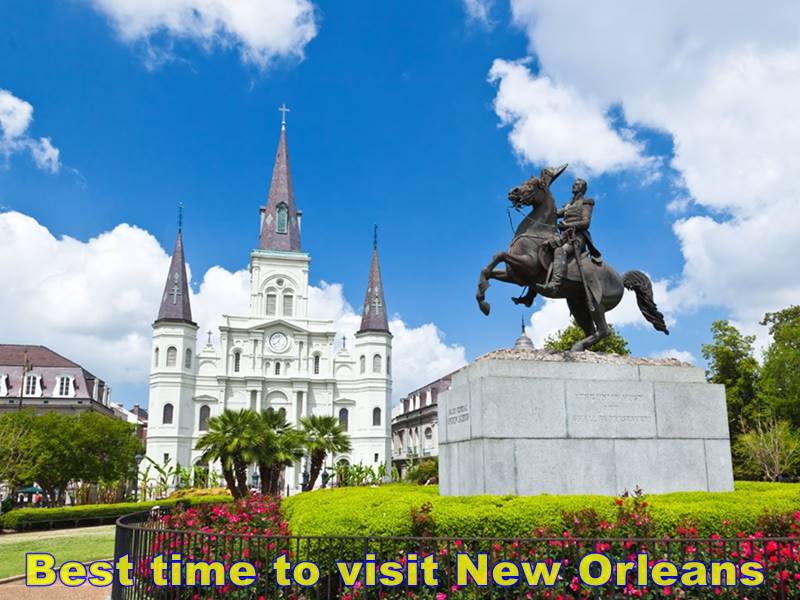Best time to visit New Orleans
New Orleans is a Louisiana city on the Mississippi River, near the Gulf of Mexico. Nicknamed the “Big Easy,” it’s known for its round-the-clock nightlife, vibrant live-music scene, and spicy, singular cuisine reflecting its history as a melting pot of French, African and American cultures. Embodying its festive spirit is Mardi Gras, the late-winter carnival famed for raucous costumed parades and street parties.
When is the best time to visit New Orleans?
When is the best time to visit New Orleans? Here is information to help you make a decision:
- The weather is good year-round in New Orleans
- On average, the warmest months are June, July, August, and September.
- New Orleans has dry spells in November and December
- January is the coldest month of the year
- The best months for swimming are June, July, August, and September
Weather and climate in New Orleans
- In January the weather is not good, but it is still good. For example, 16 ° C is the maximum temperature in January, and it rains about 7% during January.
- Between February and June, the weather is good. At noon, it’s 31 ° C on average, and you can expect to have 23mm of rainfall/month during this period.
- Between July and August, the weather is passable but still good. At noon, it is 32 ° C on average, and, in August, eight days of rain are expected.
- In September, the weather is favorable. For example, 31 ° C is the maximum temperature in September.
- In October, the weather is perfect. The record temperature for this month is 33 ° C.
- Between November and December, the weather is splendid. The thermometer rises to 18 ° C and, in December, two days of rain are expected.
Best time to travel or Visit to New Orleans
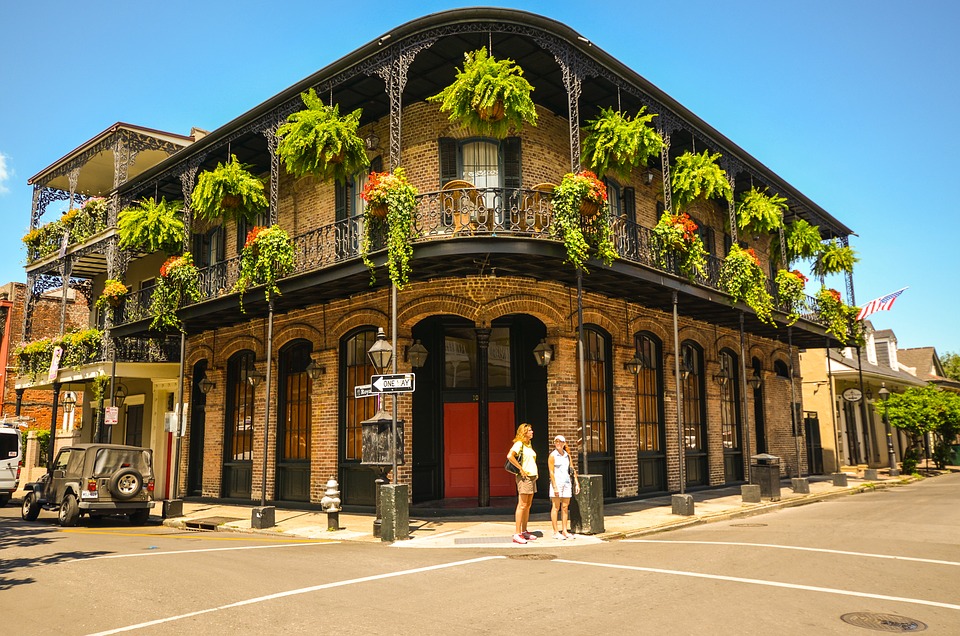
Spring
- From mid-March to the end of May is the ideal time.
- Plus, the music festival season kicks off in April!
Autumn
- In October, festivals and events of all kinds take place in the city.
- Halloween is the ideal occasion to enjoy the costumes, the extravagances, and the evil.
Weather in New Orleans
Spring
- Although sweltering days may have to be endured, the weather is generally pleasant, and shorts and you can wear shirt sleeves.
Autumn
- In October, after a very long summer, it starts to cool.
Things to Do In New Orleans
In the state of Louisiana, New Orleans is one of the rarities of the southern United States. It is a spiritual, unruly, and profane jumble of European and African heritage that insists on living whatever happens because there are too many pleasures in the world not to enjoy our brief passage through it.
New Orleans was founded by French settlers in 1717, ceded to the Spanish in 1763 and recovered by Napoleon, and sold to the United States in 1803, to become, a few decades later, an essential port of arrival and trade for African slaves.

How could it not be a unique city with the assortment of influences that have shaped it?
It sits between two banks: to the south, that of the Mississippi River, and the north, that of Lake Pontchartrain. The fact that it floats between two glasses of water and that much of the city is below sea level and in marshy terrain makes it very vulnerable to flooding.
Hurricanes and rains have flooded it on more than one occasion, but the culminating disaster in its history was Hurricane Katrina in 2005.
The levees gave way to the water, which flooded 80% of New Orleans and left a trail of more than a thousand deaths in its wake.
It was a natural catastrophe without precedent in the United States:
- evacuated the city.
- Thousands and thousands of homes and streets were left impossible.
- Many neighbors never returned.
The water punished the poorest and only spared some areas, such as the French Quarter’s most touristy neighborhood.
And while more than a decade has passed and New Orleans’s population is stubborn, we still feel the ravages of Katrina in some destroyed homes and pothole-strewn roads.
On the hurricane and its effect on the city, we recommend a short book that we loved: Why New Orleans Matters by Tom Piazza.
HOW TO GET TO NEW ORLEANS
We arrived by road as part of Route 61 from Memphis to New Orleans, but the most common is to land at the Louis Armstrong International Airport, named after one of the most beloved musicians in the city.
Although it‘s about 30 minutes from downtown New Orleans, transportation is quite expensive. A taxi costs about $36 (up to two passengers) or $15 per person (more than two passengers).
The shuttle (minibusses) is a little cheaper, but the cheapest is to take a local bus that in 50 minutes leaves you in the center for $2. You have all the detailed options on the airport website.
Best time to visit New Orleans
Recent Posts
- The Best time to visit New Orleans
- Best time to visit Maui
- Best time to visit Acadia national park
- Things to do in laguna beach
- Best time to visit san francisco
WHERE TO Stay IN NEW ORLEANS
The accommodation in New Orleans is costly. If you visit the city during the most important festivals, Mardi Gras and Jazz Fest, it is almost prohibitive, but the prices do not vary much the rest of the year.
Most people prefer to sleep in the French Quarter:
- It is the most central area.
- You can walk everywhere.
- The hotels occupy historic buildings with a lot of charm.
But they are advantages that are paid. Here’s a list of hotels in the French Quarter.
If you are not going to the city to go out, the only area of the French Quarter that we recommend you avoid is Bourbon Street, where there is loud music until the wee hours of the morning.
Another very central and slightly cheaper area is the Arts District – Warehouse District, an old industrial district that has been filled with art galleries and restaurants in a few years.
Another popular neighborhood to sleep in is the Garden District, where apartments in beautiful houses abound. The area is tranquil, but hotels and pensions are also quite expensive.
Finally, if you want to save a little on your budget, you have the option of apartments. We opted to rent an Airbnb apartment about a 30-minute walk from the center.
IS NEW ORLEANS SAFE?
If you rent in the French Quarter, you won’t have to worry, but if, like us, you are staying in other neighborhoods further away from the city, first read the reviews of other guests regarding safety.
New Orleans has a high crime rate, and not all areas are safe at night. If you return when it is already dark to a suburban neighborhood, it is better that you do it by taxi.
With this, we do not want to alarm you since we feel safe at all times in the center and the tourist districts, and we did not have any incidents.
But we must bear in mind that in the city there is a lot of life on the streets, people drink a lot, and it is easy for a bag or mobile thieves to find distracted victims.
We think this is an aspect worth mentioning in any New Orleans guidebook, but, as we said, our experience was excellent.
WHAT TO SEE IN NEW ORLEANS IN TWO DAYS
Put on comfortable shoes; we are going to discover the city! This section will tell you what to see in New Orleans in two days, focusing on the French Quarter and Garden District neighborhoods.
But, if you can, we recommend dedicating at least three days to visit neighborhoods beyond the center.

As for the transportation of this route through New Orleans, we almost always move on foot. Our Airbnb host lent us a couple of bikes, and on the first day, we made the mistake of pedaling to the French Quarter on the weekend.
As it is pedestrianized and crowded with people, we couldn’t advance more than a few meters.
Instead, we also used them to discover the Mississippi shoreline and the Garden District, and Audubon Park and those areas were perfect for biking.
THE FRENCH QUARTER
The French Quarter (or Vieux Carré) is the heart of New Orleans, the city’s historic district and tourist hub.
The French founded it, and later the Spanish also left their mark, so it has a more European than American feel.
Arched streets, colorful houses with wrought-iron balconies brimming with flowers or Mardi Gras plastic beads, corridors are leading to backyards.
The French Quarter is a fairytale neighborhood, although it is completely geared towards tourism. In addition to souvenir shops and street musicians and performers, this neighborhood is full of clubs selling XXXXL size beers and cocktails.
Drinking on the street is allowed, so New Orleans is a magnet for bachelor parties and crazy nights.
In this neighborhood and its surroundings, we recommend:
- Jackson Square. This park, formerly the city’s Plaza de Armas, is the epicenter of the French Quarter. The Louisiana Purchase ceremony took place, the treaty by which Napoleon sold Louisiana (then a much larger territory) to the United States in 1803.
- In Jackson Square, stroll through the gardens, visit the St Louis Cathedral and stop by the artists’ area, which sells all kinds of souvenirs on one side of the square.
- Bourbon Street. It is the most libertine and unbridled street in the French Quarter, one club after another where you can listen to live jazz, drink liters and liters of alcohol, or attend a striptease.
It doesn’t smell very good (to pee) in the morning, but at night you have to stop by even for a while to see the neon lights and the atmosphere.
- St Louis Cemetery No. 1. This cemetery is on the border between the French Quarter and the Tremé neighborhood, and it is one of the places we liked the most in New Orleans.
You enter a guided tour, with the advantage that you get to know first-hand the stories of the cemetery, which are not few, as we tell you in this article. Get ready to visit the voodoo queen!
Best time to visit New Orleans
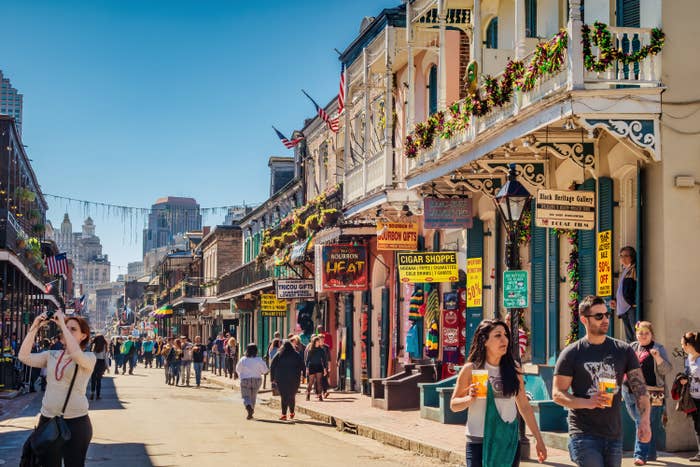
- French Market. This historic market includes dozens of food stalls, antiques, clothes, cheap souvenirs.
- Cafe du Monde. At one end of the French Market, you will find the most famous coffee shop in New Orleans. You can’t leave without eating some beignets with a café au lait!
- The beignets are a kind of donuts with a ton of sugar icing over, and larguíisimas lines form for testing.
- Preservation Hall. One of the most acclaimed jazz venues in New Orleans. The ticket serves you for a 45-minute session in a small place with an intimate atmosphere and does not serve drinks (although you can enter them in plastic cups).
- Frenchmen Street. This street does not belong to the French Quarter but the Marigny neighborhood, but it is very close, and we include it because it is one of the best places to listen to live music in a more alternative environment.
- We loved enjoying jazz at its clubs such as The Spotted Cat, strolling through the artists’ markets, and dining at one of its many restaurants. Many clubs have a cover (entry price) or minimum consumption.
The Mississippi River and the Steamboats. Mississippi River with boat typical finds the Mississippi, as the Natchez, a steamboat (steamboat) offers river cruises, dinners, and brunches to the rhythm of jazz and an experience that will transport you back in time.
Even if you don’t want to take a boat, go to the riverside, a charming pedestrian walkway, and the Aquarium of the Americas.
THE GARDEN DISTRICT AND AUDUBON PARK
We continue with this guide to New Orleans through the historic Garden District, the most luxurious neighborhood in the city, a collection of opulent mansions that transport you to a southern movie of ancient times.
The wealthiest families in the city, refusing to share the French Quarter with the Creoles, bought the plantation lands on the outskirts and built their stately homes between 1832 and 1900.
The Garden District is tiny, but since we were biking and moving fast, we decided to explore the neighborhoods to the south and west until we reached Audubon Park, and we loved them too.
Those neighborhoods are much more modest, with poorly paved streets and shotgun houses, a type of home typical of New Orleans and the American South consisting of a tiny rectangular house, with the rooms placed one behind the other and doors in both ends.
Before, they served as a home for immigrants without resources. Today, many have been renovated and painted in cheerful colors.
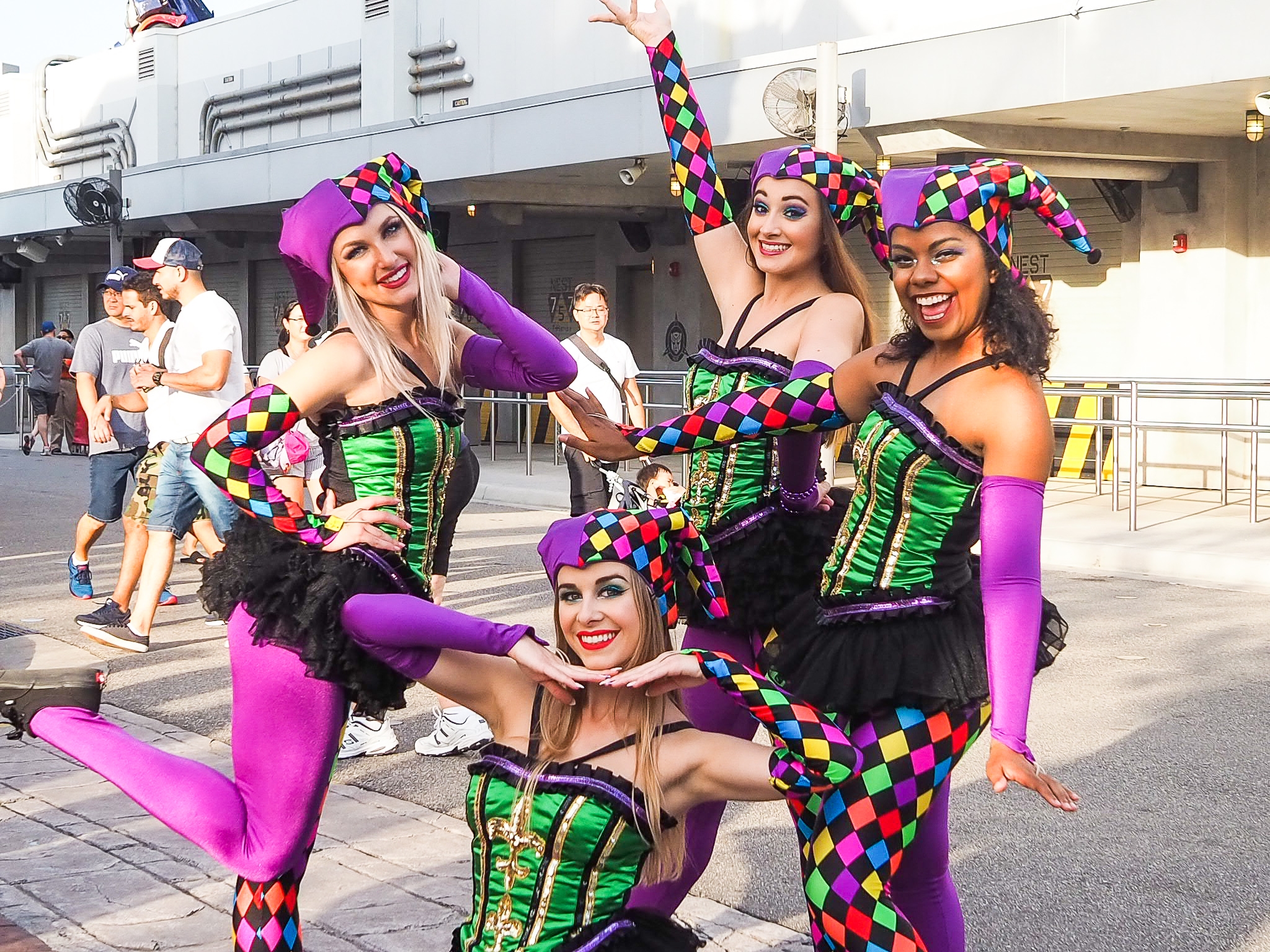
In this neighborhood and its surroundings, we recommend:
- St Charles Street. It is the main street of the Garden District, flanked by Victorian colonnaded mansions, wrought-iron entrances, manicured gardens.
- The St. Charles streetcar. One of the typical things to do in New Orleans is hops on the St. Charles Streetcar, the oldest continuously running streetcar globally. Since 1835, its green wagons have connected Canal Street (very close to the French Quarter) with the west of the city, and along the way, they pass through the Garden District and stop at Audubon Park.
- A trip costs $ 1.25, but you can buy a JazzyPass, a pass that allows you to take any bus or tram for one day or three days.
- Lafayette Cemetery N. 1. Next to the St Louis Cemetery, this cemetery is one of the most visited in New Orleans. Its charm is due to the mausoleums and the stories of immigrants from dozens of countries who lived in the neighborhood and rested here.
- Commander’s Palace. It is one of the most famous restaurants in New Orleans and one of the most select, specializing in Creole cuisine with a sophisticated air. You will recognize it by the vivid blue facade.
- Audubon Park. This gorgeous, colossal park stretches from the Mississippi River to St. Charles Avenue. Ideal for a walk, visiting the Audubon Zoo or resting for a little while by the lake on the east side, where birds such as herons, ducks, and cormorants congregate.
EXCURSIONS TO THE PLANTATIONS
One of the most popular getaways around New Orleans is excursions to the cotton or sugar cane plantations on the Mississippi River if you have more time.
Many companies are dedicated to organizing this outing: it lasts a few hours, and they take you to see the Oak Alley and Laura plantations.
We visit these and other slave plantations of the Mississippi on our own, and we tell you how to get to each one and which ones we liked the most in the article on the most beautiful plantations in Louisiana.
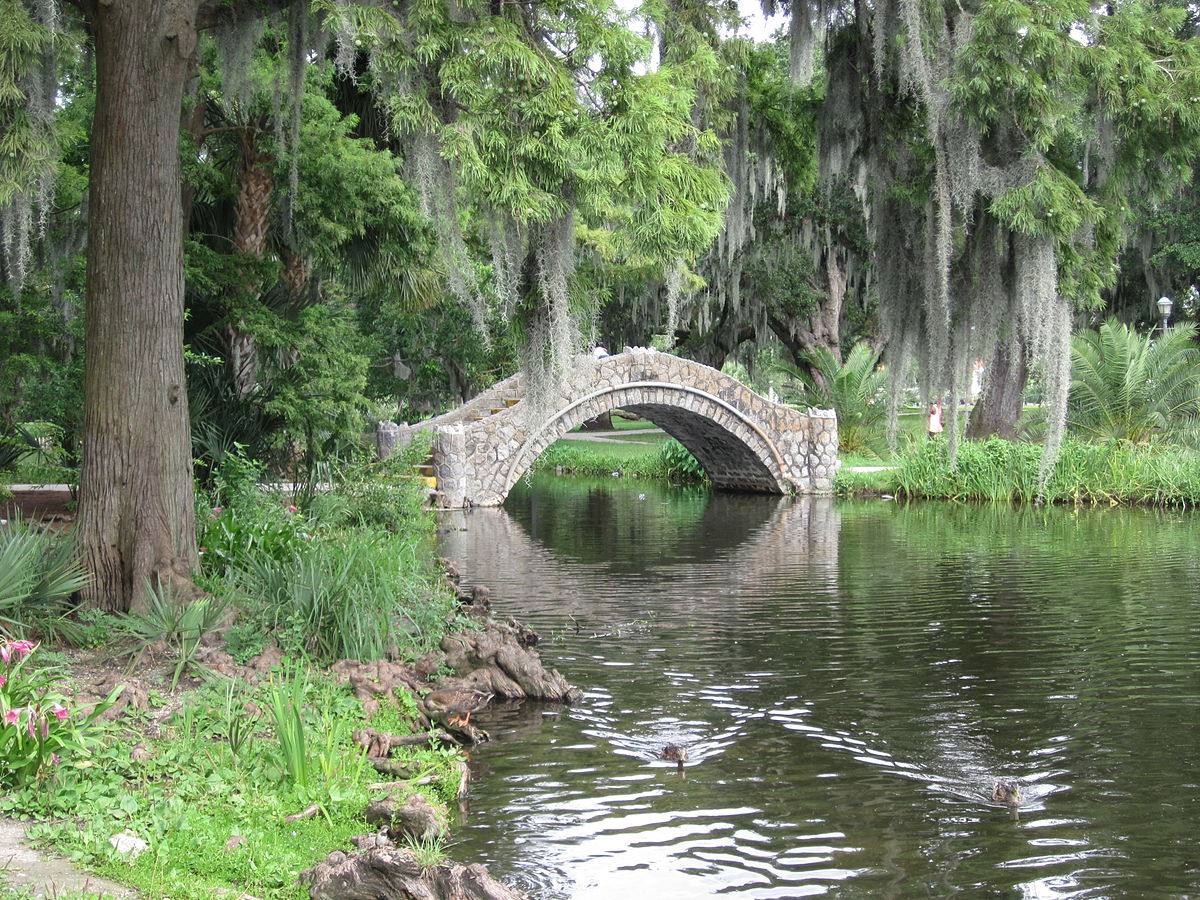
THE GASTRONOMY OF NEW ORLEANS AND WHERE TO EAT
Prepare the palate for new experiences because the gastronomy of New Orleans, like everything in the city, is unique. The Creole and Cajun influence has given rise to simple dishes, loaded with flavor and body, with ubiquitous ingredients such as okra, rice, or red beans.
These are the most typical dishes of New Orleans:
- Gumbo. A thick soup made with broth, rice, and other ingredients like shrimp, beef, crab, chicken, seafood, or even alligator sausage.
- Jambalaya. A Cajun dish made with rice accompanied by chicken, prawns, or ham. Be careful; it stings a lot!
- Crawfish étouffé. The étoufffés are stews like gumbo and can make many ingredients, but the most typical crayfish (crawfish) are here.
- Po-Boys and Muffulettas. are the most typical sandwiches in New Orleans. The PO-boys are baguettes full of meat, seafood, or fried fish, and muffulettas are round loaves that are stuffed salad olives, salami, mortadella, and Italian cheeses. Some of the best PO-boys are made at Liuzza’s By the Track.
- Sno’balls. Nothing to combat the city’s suffocation like its typical ice cream, which consists of sheets of ice to which some sweet flavored syrup is added.
- Pralines. These French sweets are the sweet tooth specialty of New Orleans, where they are made with a creamier and sweeter recipe. You will find a thousand and one stores that sell them cut.
- Beignets. As we mentioned in the French Quarter section, in New Orleans, it is almost obligatory to stop by the Café du Monde and order some beignets with café au lait. These fried rectangular sweets closely resemble donuts and are covered in icing sugar.
WHERE TO EAT IN NEW ORLEANS
There are restaurants on every corner in the French Quarter, so it won’t be challenging to find places to eat or have a drink. Here we leave you the restaurants where we ate:
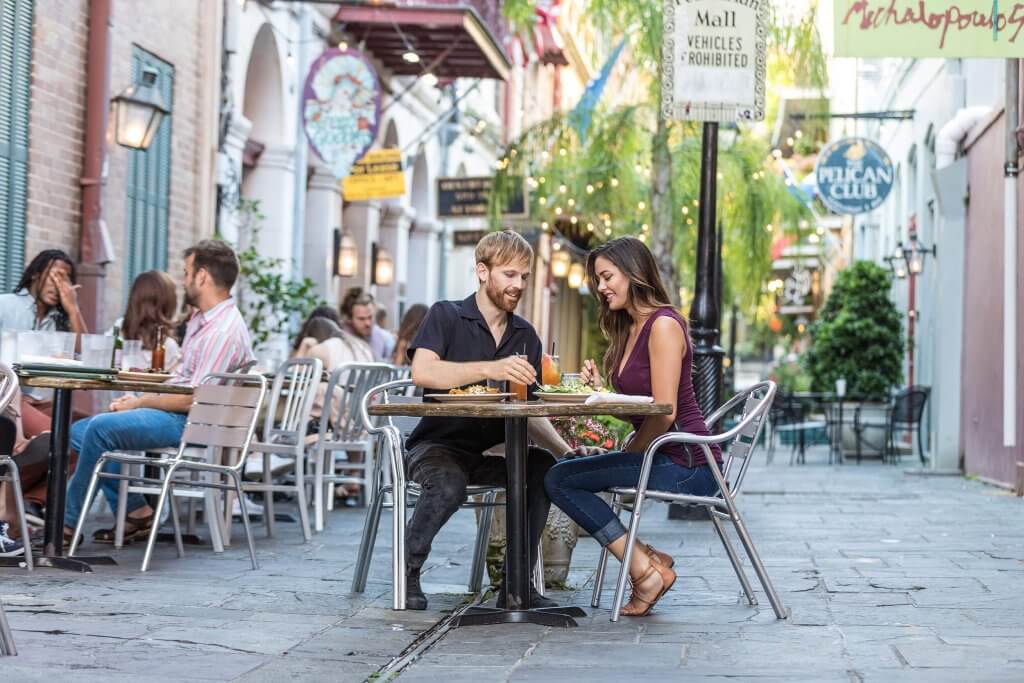
- Pierre Maspero’s (French Quarter) is a Cajun restaurant in a historic building where the slave trade occurred a few centuries ago. The great thing about this place is that they serve trios of dishes for you to try several New Orleans specialties at once.
- Dat Dog (Frenchmen Street). A hot dog joint in a historic building where you can make a hot dog taste. The grace? In addition to the classics, there are New Orleans specialty hot dogs, and you can even order an alligator or crab sausage (there is also a vegetarian option).
- Lily’s Cafe (Lower Garden District). A delicious Vietnamese restaurant on the outskirts of the Garden District. It has rave reviews, and from time to time, John Goodman drops by (although not when we were, too bad).
- Tartine (Audubon Park). After visiting Audubon Park, we ate at this cute French restaurant on the west side. It is small, although it has a lovely patio, and they prepare salads, sandwiches, and quiches, for a quick but delicious meal.
Best time to visit New Orleans
New Orleans has a humid subtropical climate: winters are not cold, but on the contrary, summers are very, very hot.
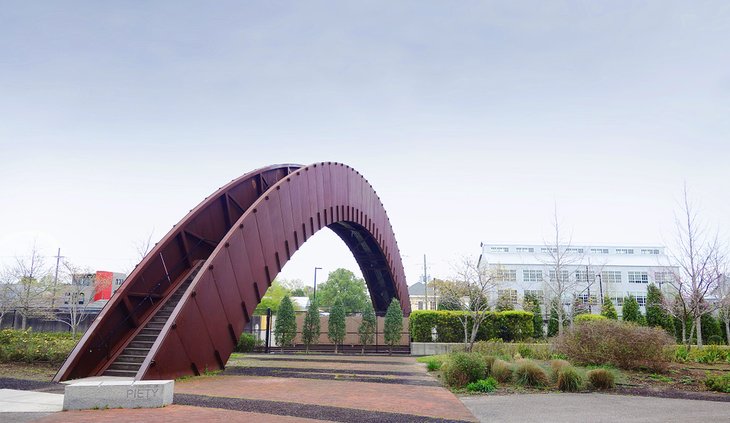
We visited the city in March and, although the temperatures were not yet at their peak, you could already feel the suffocating and sticky atmosphere, which makes you sweat as soon as you step foot in the street.
Therefore, the ideal times to visit New Orleans are early spring or fall. If you travel in summer, make sure your hotel or accommodation has air conditioning and fans.
CURIOSITIES OF NEW ORLEANS
- Mardi Gras. Mardi Gras is the capitalized tradition of the New Orleans calendar. Dates change every year (parades run through the Tuesday before Ash Wednesday).
- Societies take to the streets with their masks and floats, balconies are packed, necklaces of colored beads fly everywhere, and alcohol runs like wildfire. Although, in reality, it is a family tradition, so many people come to the city from all over the world looking to party that Mardi Gras is seen as a rampant carnival.
- It must be amazing to experience it once in your life, but the prices are through the roof!
- The Jazz Fest takes place in April and is the other immovable event in New Orleans. The jazz, gospel, blues, and R&B festival invades the city for a couple of weeks.
- The most incredible thing is that it is not a closed-door festival intended for a few: it is created by and for the inhabitants of New Orleans, and it is lived with a lot of intensity. Everyone goes to a concert in more than a dozen stages; there are massive crafts and traditional food stalls.
Best time to visit New Orleans
- Jazz funerals. Can you imagine a funeral where people dance instead of crying? The funerals jazz is one of the great traditions of New Orleans.
- They are funeral processions that take to the streets among music to pay tribute to a deceased person, almost always a musician, a relative of a musician, or a member of one of the city’s societies. They begin with solemn songs, but after the burial, the music becomes more rhythmic and joyful, and the second line, the group of people that parades behind the band, does not stop dancing.
- Famous children. New Orleans is the birthplace of mythical musicians, among whom the legendary Louis Armstrong stands out, and writers such as Anne Rice. The latter has set several novels (such as Interview with the Vampire ) in the city.
Best time to visit New Orleans
